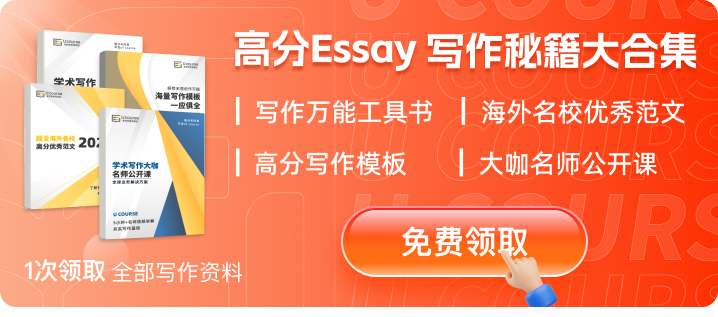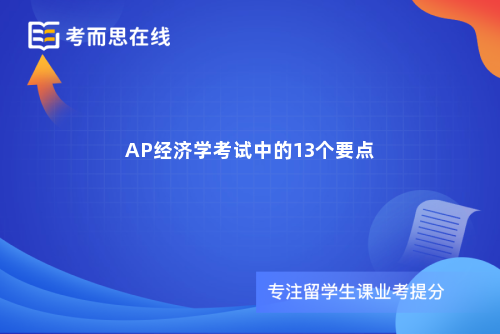
AP经济学考试中的13个要点
来源:考而思在线

AP经济学有两门独立的考试:一是微观经济学,二是宏观经济学。每门考试设立的对象,都是有志于在高中阶段完成大学第一学期入门课程学习的有条件的学生。下面是AP经济学考试中的13个要点,希望对大家的AP考试能够有所帮助。
1 、Fundamentals of Economic Analysis
Scarce Resources
Production Possibilities
Functions of Economic Systems
2、 Demand, Supply, Market Equilibrium, and Welfare Analysis
Demand
Supply
Market Equilibrium
Welfare Analysis
3、Elasticity, Microeconomic Policy, and Consumer Theory
Elasticity
Microeconomic Policy and Applications of Elasticity
Consumer Choice
4、The Firm, Profit, and the Costs of Production
Firms, Opportunity Costs, and Profits
Production and Cost
5、Market Structures, Perfect Competition, Monopoly, and Things Between
Perfect Competition
Monopoly
Monopolistic Competition
Oligopoly
6、Factor Markets
Factor Demand
Least-Cost Hiring of Multiple Inputs
Factor Supply and Market Equilibrium
Imperfect Competition in Product and Factor Markets
7、Public Goods, Externalities, and the Role of Government
Public Goods and Spillover Benefits
Pollution and Spillover Costs
Income Distribution and Tax Structures
8、 Macroeconomic Measures of Performance
The Circular Flow Model
Accounting for Output and Income
Inflation and the Consumer Price Index
Unemployment
9、 Consumption, Saving, Investment, and the Multiplier
Consumption and Saving
Investment
The Multiplier Effect
10、Aggregate Demand and Aggregate Supply
Aggregate Demand
Aggregate Supply
Macroeconomic Equilibrium
The Trade-off Between Inflation and Unemployment
11、Fiscal Policy, Economic Growth, and Productivity
Expansionary and Contractionary Fiscal Policy
Difficulties of Fiscal Policy
Economic Growth and Productivity
12、Money, Banking, and Monetary Policy
Money and Financial Assets
Fractional Reserve Banking and Money Creation
Monetary Policy
13、 International Trade
Comparative Advantage and Gains from Trade
Balance of Payments
Foreign Exchange Rates
Trade Barriers
以上就是AP经济学考试的13个要点,AP经济学每门考试都要求至少一学期的大学程度的学习。在同一年中,学生可以只参加一门考试或两门都参加。每门考试都各有一个分数。
当前文章链接:
凡来源标注“考而思”均为考而思原创文章,版权均属考而思教育所有,任何媒体、网站或个人不得转载,否则追究法律责任
上一篇:
点评AP考试在国内的发展形势下一篇:
澳洲留学本科考试挂科不能毕业该怎么补救?
免费获得学习规划方案
已有 2563 位留学生获得学习规划方案
马上领取规划
*已对您的信息加密,保障信息安全。











